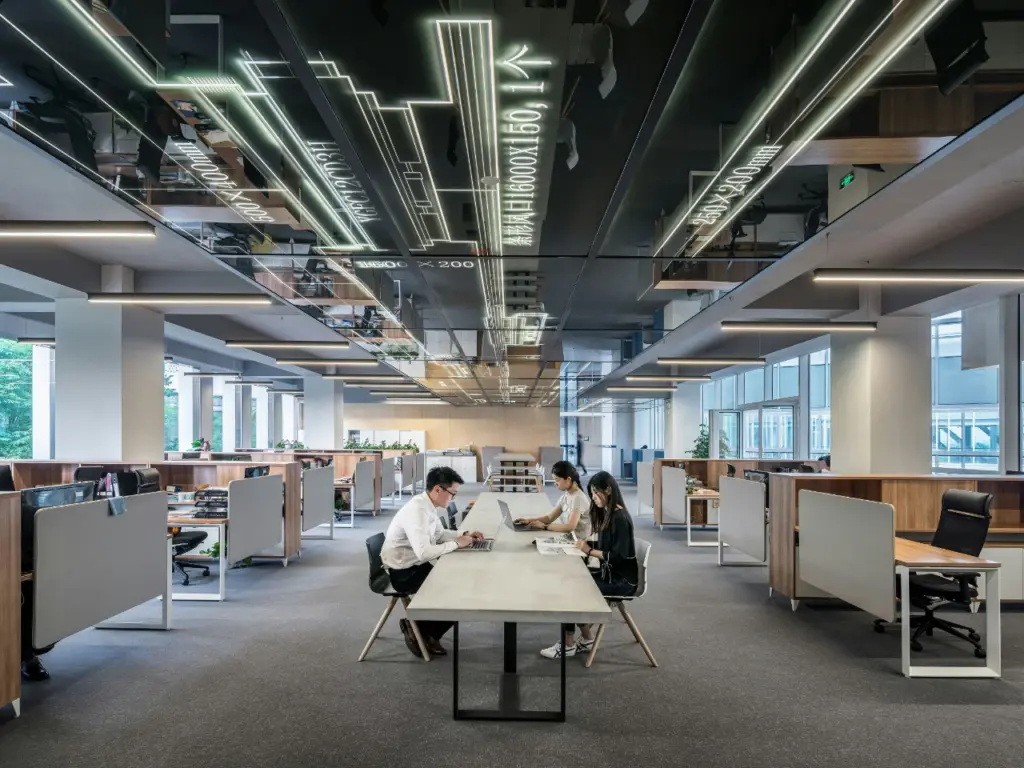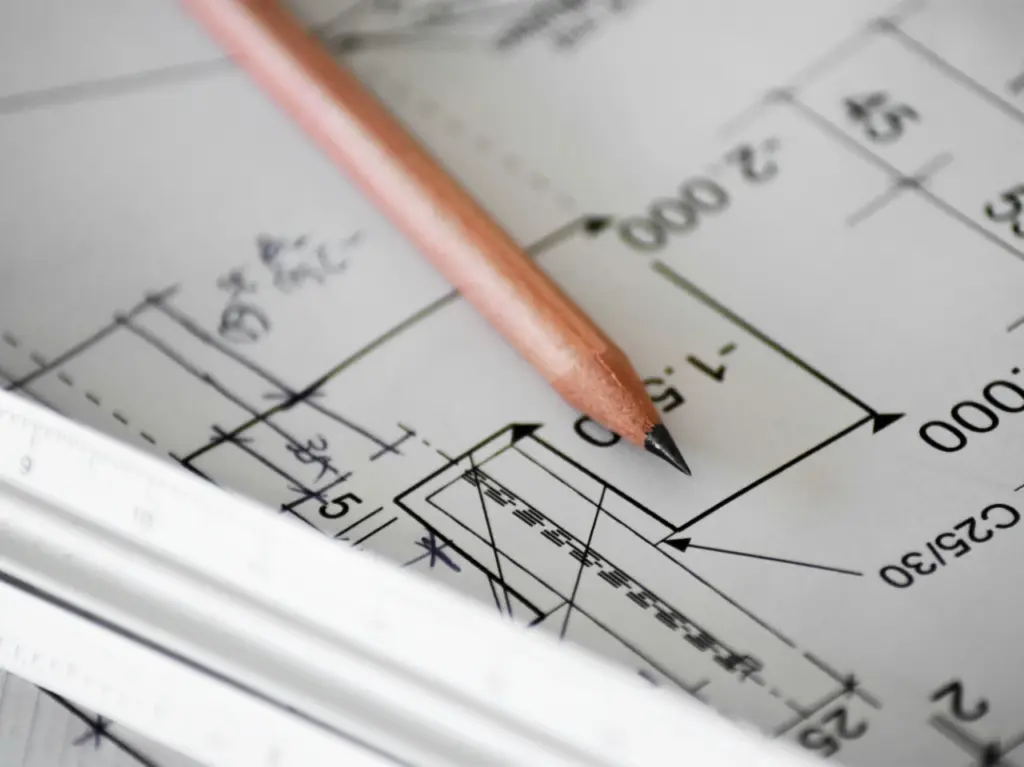How does your office space impact productivity and employee satisfaction? Office space planning is about more than just organizing furniture; it’s the foundation of a prosperous work environment.
By strategically designing your layout, you can encourage collaboration, enhance efficiency, and support the diverse needs of your team. Whether you’re dealing with a hybrid office or a traditional setup, thoughtful planning is key to unlocking your space’s full potential.
Are you ready to upgrade your commercial office layout? read on to learn these strategies and see how space planning can transform your business.
What is Office Space Planning for Commercial Office Layouts?
Space planning is the process of organizing and designing an office layout to maximize functionality and efficiency. This involves organizing workstations, meeting rooms, and common areas in a way that supports the business’s goals and accommodates the needs of its employees.
A workspace or office plan should reflect the company’s culture and operational requirements, ensuring that the layout promotes collaboration, efficiency, and well-being of people in the office.
Adequate space planning also involves understanding how different office areas interact and how they can be optimized to create a cohesive work environment.
Why is a Well-Designed Office Layout Important?

A well-designed office layout can make a significant difference in how employees interact and work. Here’s why a thoughtful office space plan is crucial:
- Boosts Productivity: A smart office layout enhances productivity by minimizing distractions and streamlining workflows, enabling employees to work efficiently and focus better.
- Enhances Employee Satisfaction: Comfortable, well-organized spaces enrich employee morale and satisfaction, with ergonomic furniture and natural light contributing to a positive work environment.
- Supports Business Goals: The layout should align with business objectives, providing the right office spaces for collaboration, privacy, or future growth, supporting overall strategy.
- Optimizes Space Usage: Efficient space planning maximizes the use of every square foot, reducing costs and ensuring that all areas serve a purpose.
- Enhances Communication and Collaboration: A layout that encourages interaction and teamwork promotes innovation and strengthens team dynamics, is crucial for a hybrid work environment.
- Improves Health and Well-being: Incorporating ergonomic design, ventilation, and natural light in the layout reduces health risks and supports both physical and mental well-being.
- Reflects Company Culture: The layout mirrors the company’s culture and values, attracting talent and reinforcing brand identity through design choices that align with corporate ethos.
- Adapts to Changing Needs: A flexible office layout can easily adapt to growth or changes, ensuring the space remains functional and efficient over time.
- Supports Sustainability Goals: Strategic planning in the layout can enhance energy efficiency and reduce waste, contributing to the company’s sustainability efforts.
- Enhances Client Impressions: A well-organized, aesthetically pleasing layout creates a positive impression on clients, reinforcing the company’s professionalism and attention to detail.
Key Elements to Consider When Planning an Office Space

Planning an office space involves several crucial factors to ensure a functional and productive environment. Here’s a streamlined overview of what to consider:
Space Requirements and Layout
Understanding Space Needs: Assess the number of employees, their work types, and specific needs to design a suitable structure.
Efficient Use of Square Footage: Maximize space by balancing workstations, meeting rooms, and common areas to avoid overcrowding.
Work Style and Collaboration
Employee Work Styles: Design the office based on whether employees work individually or collaborate in teams.
Collaboration Areas: Create designated spaces for meetings and teamwork to enhance communication and productivity.
Technology Integration
Technology Needs: Ensure ample power outlets, data ports, and Wi-Fi connectivity, along with necessary equipment for conference rooms.
Smart Office Solutions: Incorporate smart technology for lighting, climate control, and security to improve efficiency and comfort.
Flexibility and Future Growth
Scalability: Design flexible workspaces that can adapt to future changes and growth.
Regular Reviews: Periodically assess the layout of your physical office space for employees’ evolving needs.
Employee Comfort and Well-Being
Ergonomic Design: Invest in ergonomic furniture and design for comfort to reduce strain and improve well-being.
Natural Light and Ventilation: Utilize natural light and ensure good ventilation for a healthier work environment.
Space Planning for Different Work Models
Hybrid Work Models: Create flexible spaces for both in-office and remote work, including hot-desking and virtual collaboration facilities.
Remote Work Integration: Provide tools and technology to support seamless communication between remote and in-office employees.
Health and Safety Considerations
Compliance with Regulations: Follow health and safety regulations, including fire exits, accessibility, and building codes.
Safety Features: Include security systems, emergency protocols, and ergonomic assessments.
Aesthetic and Brand Alignment
Office Design and Branding: Reflect your company’s brand and culture through the office design.
Aesthetic Appeal: Ensure the office is visually appealing and creates a positive atmosphere.
Budget and Cost Considerations
Budget Constraints: Develop a budget covering furniture, technology, renovation, and maintenance.
Cost-Effective Solutions: Opt for durable materials and versatile office furniture to maximize value.
Sustainability and Environmental Impact
Eco-Friendly Design: Use sustainable materials and energy-efficient solutions.
Green Certifications: Consider certifications like LEED to demonstrate a commitment to environmental responsibility.
Steps to Create an Effective Office Space Plan

Creating an effective office space plan is essential for optimizing productivity and ensuring that the work environment sustains your business goals. Here’s a comprehensive guide to help you through the process:
1. Assess Your Needs
Understanding your business and employee needs is the foundation of a successful office space plan.
- Identify Objectives: Begin by clarifying the primary goals of your office space. Are you aiming to enhance collaboration, support a hybrid work model, or plan for future expansion? Your objectives will dictate the overall layout and design.
- Evaluate Current Usage: Examine how your current office space is utilized. Look for areas of inefficiency or underuse that need addressing. This assessment will help in identifying the gaps and opportunities for improvement.
Consulting with employees provides valuable insights into their needs and preferences.
- Gather Feedback: Engage with your employees to understand their workspace preferences and requirements. This feedback should cover their work styles, desired amenities, and any specific needs they have for their work environment.
- Work Patterns: Analyze how employees interact with the space throughout the day. Determine if they require private areas for focused work, collaborative spaces for team projects, or a mix of both.
2. Develop a Layout Plan
Creating a preliminary design layout helps visualize the office space and organize key areas effectively.
- Sketch the Layout: Start with a basic sketch of your office layout. Include workstations, meeting rooms, break areas, and storage spaces. Ensure that the layout promotes smooth flow and accessibility.
- Incorporate Key Elements: Make sure that the layout has all essential elements like desks, conference rooms, and common areas. Proper placement of these elements is crucial for maximizing space and functionality.
Using space planning tools can streamline the design process.
- Use Planning Tools: Employ space planning software to create a detailed office floor plan. These tools offer visualization features that help in refining the layout and making adjustments as needed.
- Consult a Designer: Consider working with a professional office designer if necessary. They can provide expert advice and help optimize the layout for both aesthetics and functionality.
3. Optimize the Layout
Maximizing space utilization is key to an efficient office layout.
- Smart Furniture Choices: Select furniture that is multifunctional or easily reconfigurable. This approach helps in making the most of the available space and adapting to changing needs.
- Efficient Storage Solutions: Implement storage solutions that keep the workspace organized and clutter-free. This can include built-in cabinets, shelving, or modular storage systems.
Considering natural light and ergonomics enhances the work environment.
- Natural Light: Position workstations and common areas to benefit from natural light. Good lighting not only improves the work environment but also contributes to employee well-being and productivity.
- Ergonomic Design: Ensure that workstations and furniture are ergonomically designed to support comfort and reduce physical strain. Ergonomic considerations include adjustable chairs, proper desk height, and ample workspace.
4. Implement Technology and Infrastructure
Integrating technology and infrastructure into the office design is essential for modern workplaces.
- Tech Requirements: Identify and incorporate the technology needs for your office, such as power outlets, internet connectivity, and audiovisual equipment. These elements should be seamlessly integrated into the layout.
- Future-Proofing: Plan for future technology upgrades by including additional outlets and flexible space arrangements. This foresight helps accommodate new equipment and evolving technology needs.
Planning for security and access ensures a safe and efficient workspace.
- Security Systems: Include security features such as access control systems, surveillance cameras, and alarm systems in your office design. These measures help safeguard the office and its occupants.
- Access Points: Design access points to facilitate smooth movement throughout the office. Ensure that entry and exit points are strategically located and support efficient flow.
5. Implement and Review
Executing the plan involves setting up the office space according to the design.
- Build and Set Up: Proceed with the construction or renovation based on the finalized design. Install furniture, technology, and other elements as planned.
- Organize and Move In: Arrange the office layout and coordinate the move-in process. Ensure that everything is in place for a smooth transition to the new or redesigned office space.
Gathering feedback and making adjustments are crucial for optimizing the space.
- Employee Feedback: After setting up the office, seek feedback from employees to identify any issues or areas for improvement. This feedback can help refine the layout and address any concerns.
- Monitor and Evaluate: Regularly review the effectiveness of the office space plan. Assess how well the layout supports business operations and employee needs, and make adjustments as necessary.
How to Maximize Square Footage in Office Design

Maximizing square footage in office design is crucial for creating an efficient and productive workspace. By making the most of your available space, you can enhance functionality and ensure that your office environment supports the needs of your team members. Here’s a guide to help you effectively utilize every square foot of your office.
Assess Your Space Needs
Understanding your office’s requirements is the foundation of an effective space plan. Start by identifying the key functions your office needs to support, such as workstations, meeting rooms, and collaborative areas. This helps prioritize space allocation and ensures essential areas are adequately planned. Additionally, evaluate how your current office layout utilizes space to pinpoint areas that could be reorganized or improved.
- Identify Key Functions: Determine essential areas like workstations and meeting rooms.
- Evaluate Existing Space Layout: Assess how space is currently used and identify underutilized areas.
- Consult with Employees: Gather feedback to understand their workspace needs and preferences.
Optimize Office Layout
A well-thought-out office building layout is vital for making the most of your square footage. Consider using an open floor plan to create a flexible and adaptable workspace. Minimizing partitions and walls can make the space feel larger and more fluid. Modular and multifunctional furniture provides flexible office space to meet evolving needs, allowing for easy reconfiguration.
- Open Floor Plan: Reduce partitions and walls to enhance space flow and flexibility.
- Modular Furniture: Use adjustable desks and movable partitions for adaptable layouts.
- Shared and Multi-Use Areas: Designate spaces for hot-desking and collaboration to optimize space use.
Efficient Storage Solutions
Effective storage solutions help reduce clutter and make the most of your office space. Implementing vertical storage options, such as tall shelving units and ceiling-height cabinets, can free up valuable floor space. Built-in storage, like custom cabinetry, integrates seamlessly into the office design, maximizing space without compromising functionality.
- Vertical Storage: Use tall shelving and ceiling-height cabinets to save floor space.
- Built-In Storage: Incorporate custom cabinetry for seamless storage solutions.
- Decluttering: Regularly organize and declutter to keep the workspace tidy.
Maximize Natural Light
Incorporating natural light into your office design can make the space feel more open and inviting. Position workstations and common areas near windows to take advantage of natural light, which can also reduce the need for artificial lighting. Choosing light colors for walls, floors, and furniture helps reflect natural light, enhancing the sense of space.
- Position Workstations Near Windows: Utilize natural light to brighten work areas.
- Use Light Colors: Reflect natural light with light-colored walls, floors, and furniture.
- Glass Partitions: Implement glass partitions to maintain an open feel while creating distinct areas.
Utilize Design Tools
Design tools and software are essential for planning and visualizing an efficient office layout. Space planning software allows you to create detailed floor plans and experiment with different layouts. Consulting with a professional office designer can provide expert advice and help optimize your space.
- Design Software: Develop and test different office layouts using space planning tools.
- Professional Advice: Seek input from office designers for expert optimization.
- Regular Space Audits: Conduct audits to assess layout effectiveness and make necessary adjustments.
Implement Smart Technology
Smart technology can enhance office efficiency and maximize space utilization. Automated lighting systems adjust brightness based on occupancy and time of day, optimizing energy use and maintaining a comfortable environment. Space management software tracks office space usage, helping to identify underutilized areas and make data-driven decisions.
- Automated Lighting: Install systems that adjust lighting based on occupancy and time.
- Space Management Software: Track and manage space usage for better optimization.
- Hybrid Work Models: Combine working from home and in-office work to reduce space needs.
Common Mistakes in Office Space Planning and How to Avoid Them

Effective office space planning strategy is vital for creating a productive work environment. Here are common mistakes and tips for avoiding them:
Neglecting to Assess Space Essentials
Without a clear understanding of your space needs, you may end up with an inefficient layout.
Conduct a Needs Analysis: Assess the specific functions your office requires.
Consider Growth: Plan your office space for future expansion and flexibility.
Gather Employee Input: Get feedback on space needs and preferences.
Overlooking Future Growth
Failing to plan for growth can lead to a cramped or outdated office layout.
Plan for Scalability: Design with flexibility to accommodate future changes.
Adjustable Furniture: Use modular pieces that can be reconfigured.
Flexible Layouts: Create adaptable spaces that can evolve with your business.
Ignoring Employee Needs and Comfort
An uncomfortable workspace can impact productivity and morale.
Ergonomic Design: Ensure workstations support comfort and reduce strain.
Natural Light and Ventilation: Maximize light and ensure good airflow.
Break Areas: Provide comfortable spaces for employees to relax and recharge.
Underestimating the Importance of Technology Integration
An ineffective technology planning process can disrupt operations and increase costs.
Data and Power Access: Plan for ample outlets and connectivity.
Smart Technology: Implement automated systems for lighting and climate.
Future-Proofing: Ensure your office can handle future tech advancements.
Poor Space Utilization
Inefficient use of space can lead to wasted or underused areas.
Optimize Layout: Design a layout that maximizes floor area.
Multi-Use Areas: Create spaces that serve various functions.
Vertical Storage: Use tall shelving to free up floor space.
Failing to Address Acoustic Needs
Poor acoustics can disrupt productivity and comfort.
Acoustic Solutions: Use sound-absorbing materials to manage noise.
Designated Quiet Areas: Create spaces for focused work.
Layout Considerations: Position workstations to minimize noise.
Overlooking Compliance and Safety Standards
Ignoring regulations can lead to legal issues and unsafe conditions.
Understand Regulations: Familiarize yourself with building codes.
Emergency Planning: Include clear evacuation routes.
Accessibility: Ensure the office is accessible to everyone.
Focusing Too Much on Aesthetics
Balancing aesthetics with functionality is key to a successful office design.
Prioritize Functionality: Ensure the design supports work activities.
Integrate Design Elements: Blend aesthetics with practical needs.
Feedback and Testing: Check design choices with employees for practicality.
Final Thoughts
Planning for commercial office interiors is crucial for creating a workspace that encourages productivity and enhances employee satisfaction. By focusing on your space needs, integrating technology, and balancing functionality with aesthetics, you can design an effective layout.
Avoid common mistakes, such as overlooking future growth or neglecting employee comfort, to ensure your office supports both business goals and workplace well-being. Implement these strategies to transform your commercial office into a dynamic and efficient environment.
Frequently Asked Questions
What are the key office space planning guidelines Studio Forma follows?
At Studio Forma, we adhere to comprehensive office space planning guidelines to ensure your new office meets all functional and aesthetic requirements. Here are the key aspects:
Definition of Office Space Planning: We start by understanding the definition of office space planning, which involves arranging and organizing office areas to enhance functionality and productivity.
Planning and Interior Design: We integrate planning and interior design to create a layout that meets your needs, from open office space configurations to more traditional office setups.
Office Space Planning Checklist: Our planning checklist ensures that all critical elements are considered, including the amount of space needed and the appropriate layout for employees in the office.
Health and Safety Guidelines: We incorporate health and safety guidelines to ensure that the office environment complies with regulatory standards.
Importance of Office Space Planning: We emphasize the importance of office space planning to maximize efficiency and employee satisfaction.
Effective office space planning guidelines are crucial for creating a workspace that supports your business goals and enhances productivity.
How does Studio Forma handle the transition for remote workers returning to the office?
Studio Forma manages the transition of remote workers returning to the office by focusing on effective planning and design strategies. Here’s how we approach it:
Planning Strategy: We develop a planning strategy that accommodates both returning and new office space requirements, including flexible workstations and collaboration areas.
Open Plan Layout: We consider an open plan layout to facilitate interaction and ease the transition for remote workers who will come to the office.
Office Redesign: If needed, we undertake office redesign to create spaces that are conducive to both individual and group work.
Space Planning for Your Business: We tailor the space planning for your business to support a smooth transition and ensure that employees feel comfortable and engaged.
Commercial Office Space: We utilize commercial office space solutions that are adaptable to changing needs and preferences.
Our approach ensures a seamless return to the office, enhancing both functionality and employee comfort.
What factors do you consider in office space planning for a new office?
When planning a new office, Studio Forma considers several critical factors to ensure an effective and functional design. These include:
Open Space vs. Closed Office: We evaluate the balance between open space and closed office areas to meet the needs of different work styles and team dynamics.
Office Space Planning Checklist: We use a detailed checklist to address all aspects of the planning process, from layout to furniture selection.
Facility Management: We integrate facility management needs into the design to ensure the space is functional and easy to maintain.
Office Costs: We consider budget constraints and aim to optimize office costs while achieving a high-quality design.
Space Design: We focus on space design that enhances both aesthetic appeal and operational efficiency.
Effective office space planning is necessary to ensure that every aspect supports your business operations and employee well-being.
How do you incorporate health and safety guidelines into office space planning?
Studio Forma integrates health and safety guidelines into office space planning to create a secure and compliant work environment. Here’s our approach:
Health and Safety Guidelines: We follow comprehensive health and safety guidelines to ensure that the workplace layout promotes a safe working environment.
Sterile Office Considerations: We design sterile office areas where necessary, minimizing contamination risks and enhancing hygiene.
Space Planning for Your Business: We customize space planning to address specific health and safety needs, such as ventilation and emergency exits.
Planning Checklist: Our office space planning checklist includes health and safety considerations to ensure all regulations are met.
Importance of Office Safety: We prioritize office safety to protect employees and maintain compliance with legal requirements.
Incorporating these guidelines ensures a safe and healthy workspace, fostering a productive and secure environment.
What benefits does investing in office planning provide?
Investing in office space planning offers numerous benefits that contribute to the overall success of your business. These benefits include:
Enhanced Productivity: Effective planning improves workflow and efficiency, leading to increased productivity.
Improved Employee Satisfaction: A well-designed office that considers employees’ needs enhances their comfort and satisfaction.
Optimal Use of Space: Planning helps maximize the use of available space, ensuring that every office area is utilized effectively.
Reduced Office Costs: Strategic space planning can lead to cost savings by optimizing space and reducing unnecessary expenses that may affect office space utilization.
Support for Remote and In-Office Work: We design spaces that accommodate both remote workers and those returning to the office while optimizing the existing space for employees’ evolving needs.
Investing in thorough office space planning results in a functional, efficient, and pleasant workspace that supports your business goals and employee needs.

